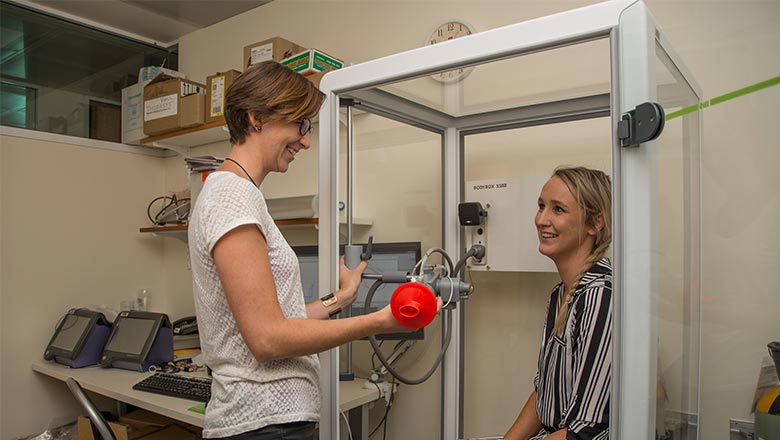Search
Research
The clinical utility of lung clearance index in early cystic fibrosis lung disease is not impacted by the number of multiple-breath washout trialsThis study aimed to determine if relationships between LCI and clinical outcomes of CF lung disease differ when only two acceptable MBW trials are assessed.
Research
Persistent activation of interlinked type 2 airway epithelial gene networks in sputum-derived cells from aeroallergen-sensitized symptomatic asthmaticsOur findings provide new insight into the molecular mechanisms operative at baseline in the airway mucosa in atopic asthmatic with natural aeroallergen exposure
Research
Impact of lung disease on respiratory impedance in young children with cystic fibrosisThe present study investigated whether lung function measured by forced oscillation technique would be impaired in the presence of infection,...
Research
ERS technical standard on bronchial challenge testing: pathophysiology and methodology of indirect airway challenge testingAssessment of airway hyperresponsiveness are valuable tools to understand and to monitor airway function and to characterise the underlying asthma phenotype to guide therapy
Research
Reference values for spirometry and their use in test interpretation: A Position Statement from the Australian and New Zealand Society of Respiratory ScienceThe ANZSRS recommends the adoption of the Global Lung Function Initiative (GLI) 2012 spirometry reference values throughout Australia and New Zealand
Research
Multiple breath washout cannot be used for tidal breath parameter analysis in infantsThere are differences in tidal breathing parameters during multiple breath washout testing with SF6 gas mixture in infants
Research
Reference values for spirometry and their use in test interpretation: A Position Statement from the Australian and New Zealand Society of Respiratory ScienceThe ANZSRS recommends the adoption of the Global Lung Function Initiative (GLI) 2012 spirometry reference values throughout Australia and New Zealand

News & Events
Annual Community Lecture: You Are What You BreatheJoin us for our Annual Community Lecture entitled "You Are What You Breathe" with Professor Stephen Holgate.

News & Events
Researchers urge caution in how asthma test is usedResearchers are urging caution in the use of a widely accepted test for diagnosing asthma, after their study found it may not be accurate in some settings.
Research
Finding the optimal regimen for Mycobacteroides abscessus treatment (FORMaT) in people with Mycobacteroides abscessus pulmonary diseaseMycobacteroides abscessus (MABS) is within the non-tuberculous mycobacteria family. It inhabits soil and water, exhibits multi-antibiotic resistance and causes opportunistic lung infections, which may progress to symptomatic MABS-pulmonary disease (MABS-PD) associated with substantial morbidity, increased healthcare utilisation, impaired quality of life and increased mortality.
